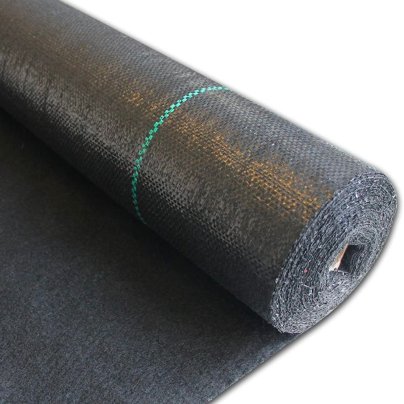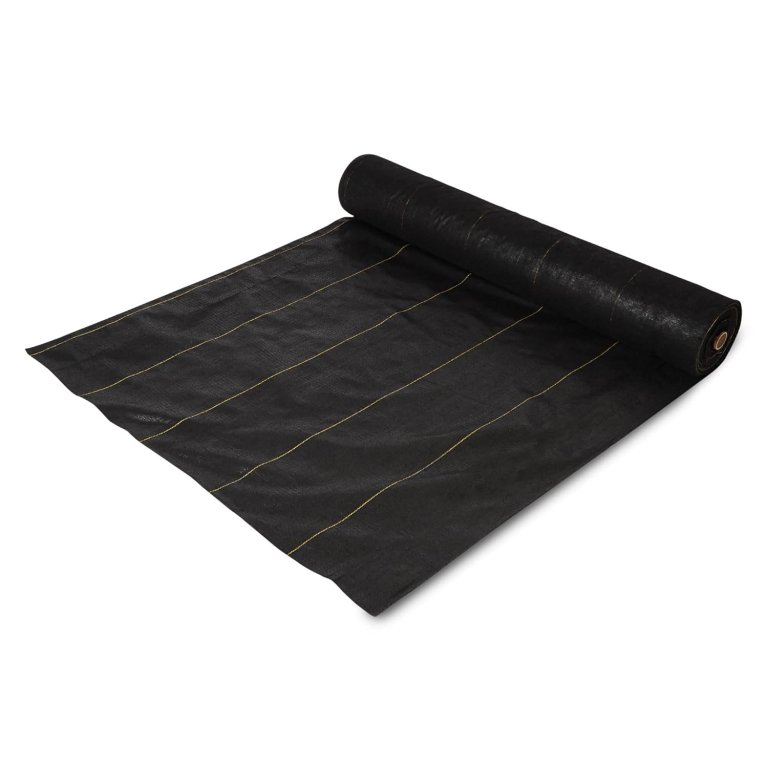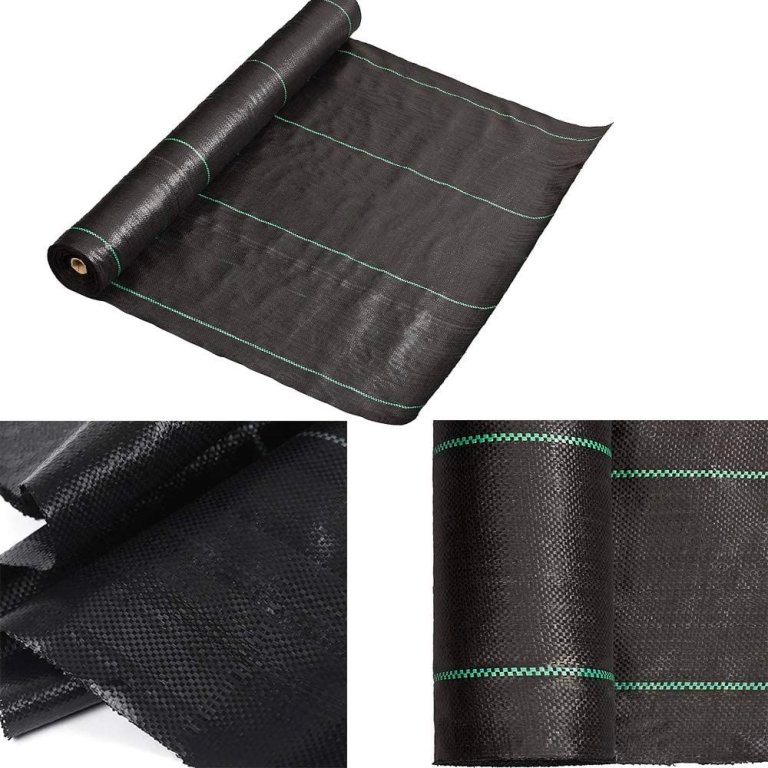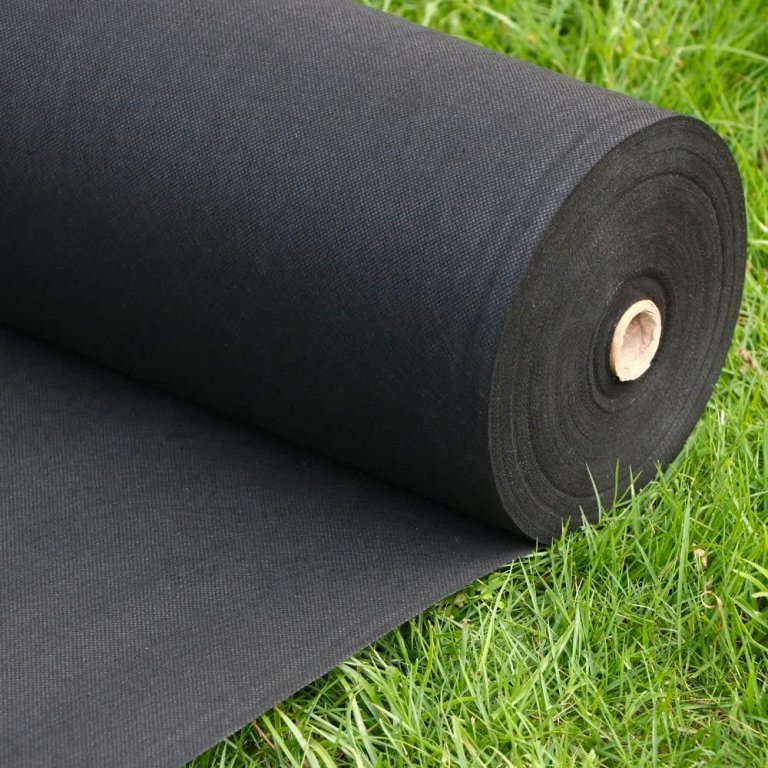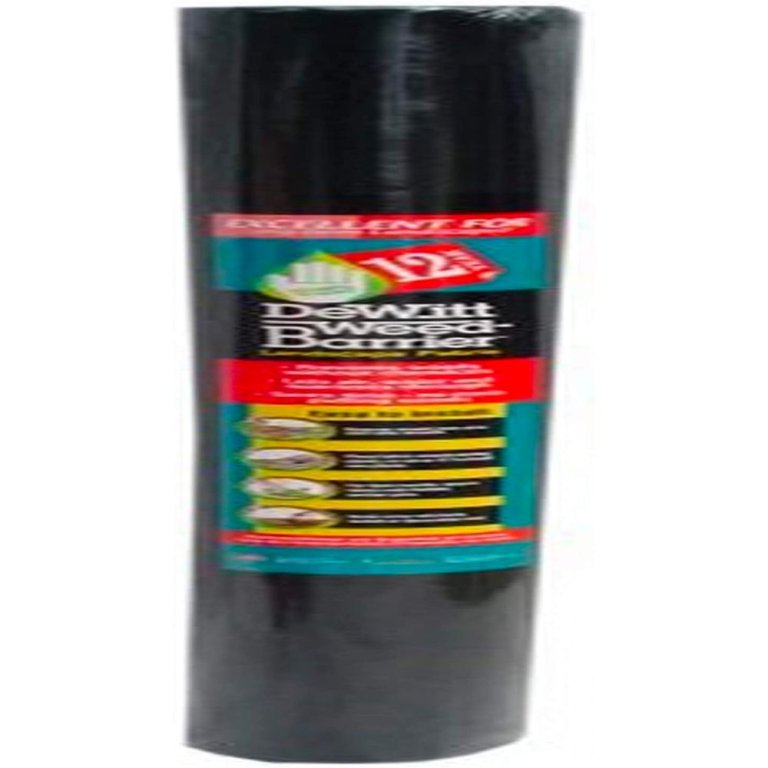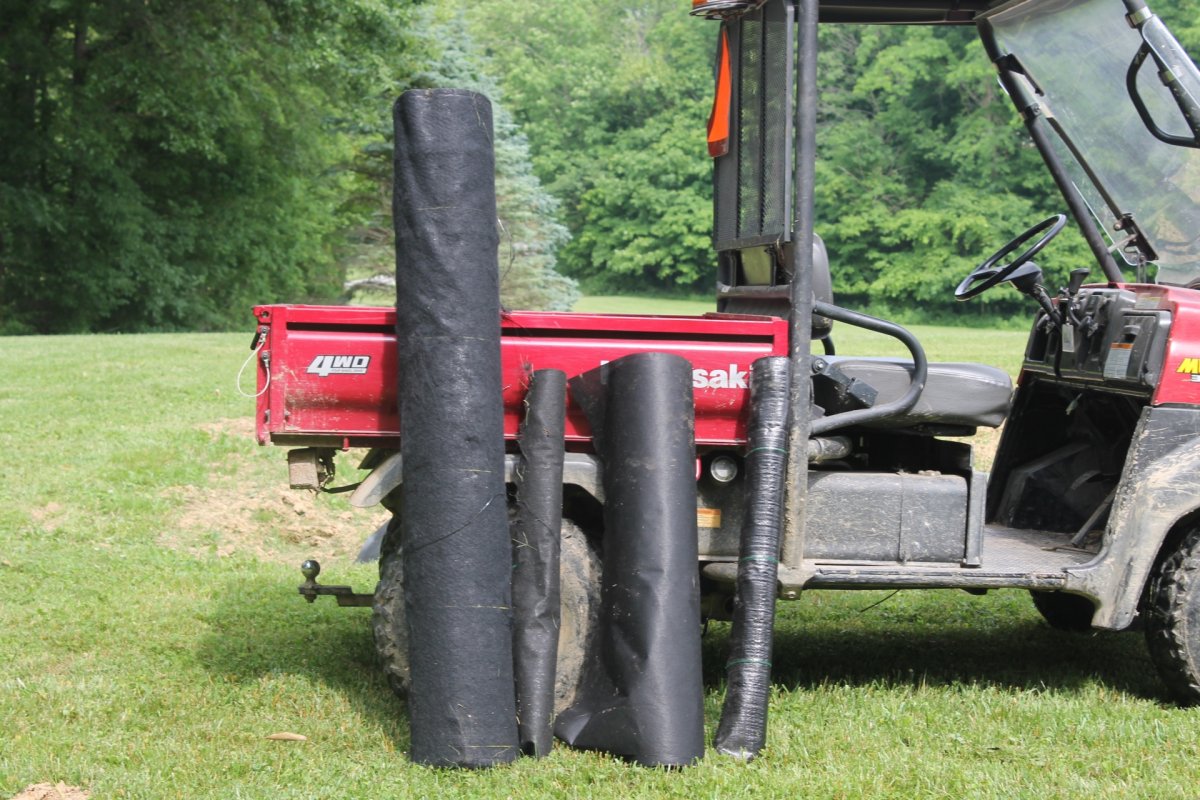
We may earn revenue from the products available on this page and participate in affiliate programs. Learn More ›
If you’re tired of pulling or spraying weeds, landscape fabric could be the golden ticket to weed-free landscaping. By acting as a physical barrier between the soil and the sun, landscape fabric prevents seeds from seeing the light of day while still allowing air and water to penetrate to the roots of plants intentionally in the bed. To find the best, we extensively researched top-rated landscape fabrics, selecting six products for our list and putting four of them to the test.
After adding them to our own garden, we’re pleased to report that all four of our tested landscape fabrics effectively kept weeds at bay. Our favorite, though, was the DeWitt Pro-5 Weed-Barrier. It’s made from a durable UV-resistant fabric, is easy to cut and torch, and blocks weeds while still allowing air, water, and nutrients to pass through. Its quality felt superior, and we think it will last several seasons.
To help bolster our own research and testing, we interviewed Taylor Olberding, co-founder of Heroes Lawn Care, a nationwide lawn maintenance company, to get his professional advice on this useful gardening product. Read on for some important features to consider when selecting the best landscape fabric, as well as our top weed barrier picks for landscapes.
- BEST OVERALL: DeWitt Pro-5 Weed-Barrier
↓ Jump to Review - BEST BANG FOR THE BUCK: Petgrow Heavy-Duty Weed Barrier Landscape Fabric
↓ Jump to Review - BEST WEED CONTROL: ECOgardener Premium Weed Barrier
↓ Jump to Review - BEST HEAVY-DUTY: Flarmor Landscape Fabric Weed Barrier
↓ Jump to Review - BEST FOR UNDER GRAVEL: ArmorLay Commercial Grade Driveway Fabric
↓ Jump to Review - LONGEST LIFESPAN: DeWitt 12-Year Weed Barrier Landscape Fabric
↓ Jump to Review
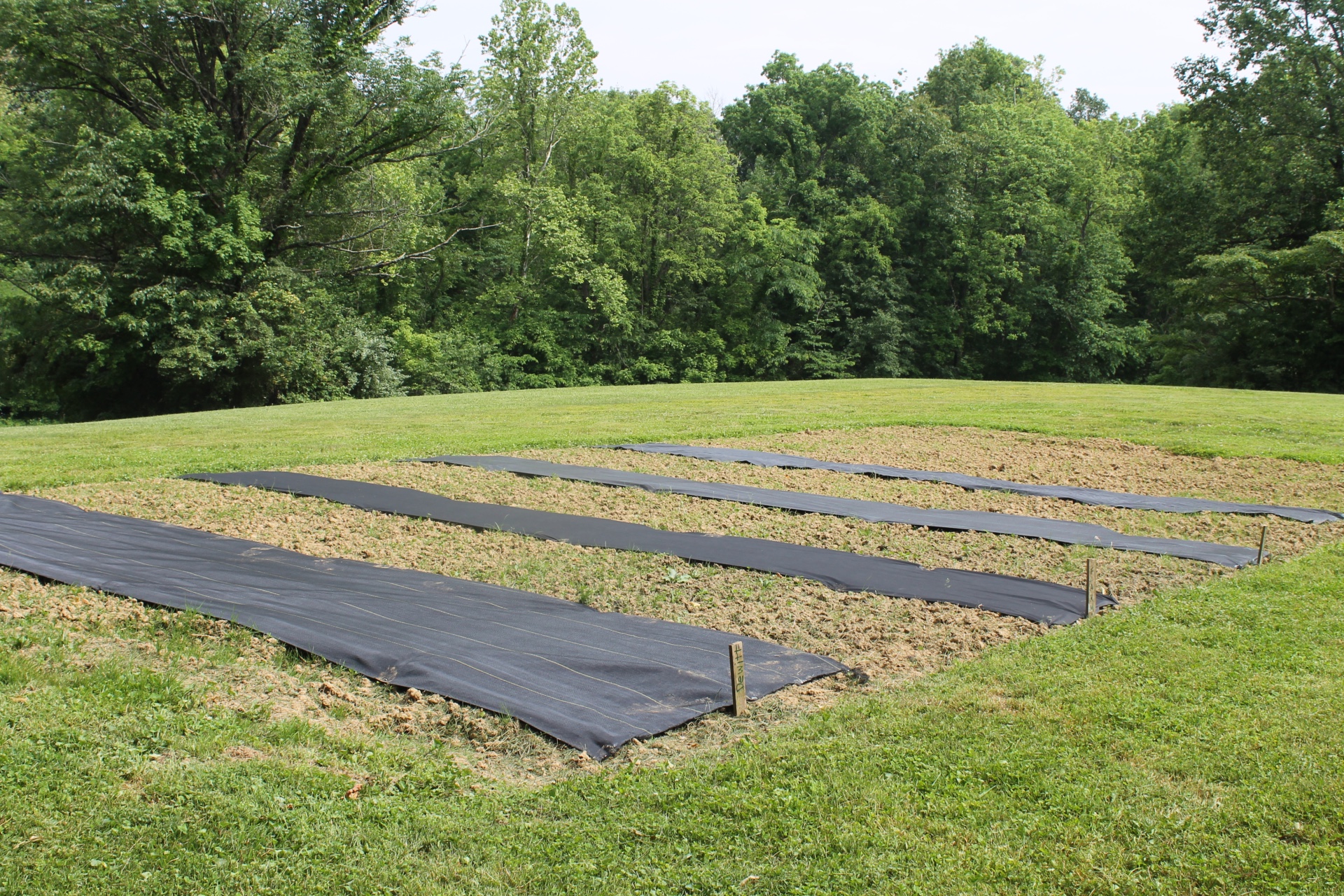
Landscape Fabric Comparison
| Product | Material | Type | Dimensions |
| DeWitt Pro-5 Weed Barrier | Polypropylene | Woven, needle-punched | 250 feet long by 5 feet wide; other sizes available |
| Petgrow Heavy-Duty Weed Barrier Landscape Fabric | Polypropylene | Nonwoven | 100 feet long by 3 feet wide; other sizes available |
| Eco Gardener Premium Weed Barrier | Unspecified fabric | Woven and nonwoven (2-layer), needle-punched | 50 feet long by 3 feet wide; other sizes available |
| Flarmor Landscape Fabric Weed Barrier | Polypropylene | Nonwoven, needle-punched | 300 feet long by 3 feet wide; other sizes available |
| ArmorLay Commercial-Grade Driveway Fabric | Polypropylene | Woven | 300 feet long by 6 feet wide |
| DeWitt 12-Year Weed Barrier Landscape Fabric | Fabric | Nonwoven, hydrophilic treated | 50 feet long by 4 feet wide |
Before You Buy Landscape Fabric
In vegetable and flower gardens, gardeners frequently move or change plants, and access to the soil is vital to the health of the garden. Laying landscape fabric across the entire area would make amending the soil very difficult, if not impossible.
Instead, consider using it in the vegetable garden to suppress weeds between rows. Soil erosion can occur when covered with landscape fabric, as it compacts over time due to the reduced earthworm population and poor aeration in these areas. Landscape fabric is best used beneath walkways or in areas with permanent trees and shrubs, or where there are no future planting plans.
Our Top Picks
Best Overall
DeWitt Pro-5 Weed-Barrier
Buy at Amazon Buy at Lowe's Buy at The Home DepotWhat We Like
- Durable; likely to last several seasons
- Needle-punched fabric allows water and air to penetrate
- Striped every 12 inches for easy plant spacing
- No fraying on the cut ends
What We Don’t Like
- A little pricey compared to other landscape fabrics
Product Specs
- Material: Polypropylene
- Type: Woven, needle-punched
- Dimensions: 250 feet long by 5 feet wide; other sizes available
Our Ratings
| Installation | 5/5 | Durability | 5/5 | Effectiveness | 5/5 | Value | 4.7/5 |
Designed for professional and commercial use, this weed control fabric mat from DeWitt is a heavy-duty and effective option for serious gardeners. The rolls are available in different sizes and are made from woven polypropylene and needle-punched fabric. This thick landscape fabric won’t rot or develop mildew in damp areas, and it’s highly UV-resistant to prevent it from degrading in sunny conditions.
After tilling up an old garden, we placed a 28-foot-long piece of the DeWitt landscape fabric alongside other fabrics in our test group. Right away, we noticed its thick, durable construction, although it comes at a higher price than many other landscape fabrics. We installed it at the end of a rainy spring season, and for the first two weeks it was in the ground, daily downpours soaked into it. Despite the harsh weather, it held up well, blocking all weeds while still allowing water to pass through.
We also appreciate that it’s striped every 12 inches to aid in alignment when planting garden beds. The fabric doesn’t fray when cut with a utility knife, and it was easy for us to torch clean holes for planting. Although our testing window was only about a month and a half long, we think this garden fabric would likely hold up for several seasons.
What our tester says: “The quality of the DeWitt Pro-5 surpasses that of every other landscape fabric I’ve ever tried. It suppresses all weeds while still allowing water and air through. It’s now my go-to when I need a weed barrier.”—Katie Barton, Product Reviews tester and writer
Get the DeWitt Pro-5 landscape fabric at Amazon, Lowe’s (2-pack, 4 feet wide), The Home Depot (2-pack, 6 feet wide), or Walmart.
Best Bang For The Buck
Petgrow Heavy-Duty Weed Barrier Landscape Fabric
Buy at Amazon Buy at PetgrowWhat We Like
- UV-stabilized for longer lifespan
- Effectively keeps weeds at bay
- Affordable price point
- Features stripes for easy plant spacing
- Needle-punched for water and air permeability
What We Don’t Like
- Slightly frayed at the cut ends
Product Specs
- Material: Polypropylene
- Type: Nonwoven
- Dimensions: 100 feet long by 3 feet wide; other sizes available
Our Ratings
| Installation | 5/5 | Durability | 4/5 | Effectiveness | 5/5 | Value | 4.5/5 |
Those who need a budget-friendly weed barrier fabric can rely on this heavy-duty option from Petgrow. This fabric provides ample irrigation for plants and flowers with its needle-punched design and is made with chemical-free and corrosion-resistant polypropylene. Not a single weed permeated this fabric during testing, and despite being hit with two-week-long storms, it did not create water pooling.
For users’ convenience, this UV-stabilized weed-blocking cloth is 100 feet long by 3 feet wide, but it comes in many other sizes to suit the amount of land and garden space that needs to be covered. Upon installation, we found this fabric to be a little more difficult to cut than other options. It snagged a bit as we ran our utility knife over it, and the edges slightly frayed. It was easy to torch, though, leaving clean holes for planting.
For its affordable price point, this is a good landscape fabric for beds and gardens, effectively blocking weeds while still allowing water and air to pass through.
What our tester says: “I put the Petgrow landscape fabric in my garden and not a single weed broke through its barrier. It was easy to work with and feels durable, especially for the price.”—Katie Barton, Product Reviews tester and writer
Best Weed Control
Eco Gardener Premium Weed Barrier
Buy at Amazon Buy at Eco GardenerWhat We Like
- 2-layer construction for durability
- Needle-punched to allow air and water through
- Features stripes for easy plant spacing
- No weeds permeated the fabric during testing
What We Don’t Like
- Frays at the cut ends
- Not treated for UV resistance
Product Specs
- Material: Unspecified fabric
- Type: Woven and nonwoven (2-layer), needle-punched
- Dimensions: 50 feet long by 3 feet wide; other sizes available
Our Ratings
| Installation | 5/5 | Durability | 4/5 | Effectiveness | 5/5 | Value | 4.3/5 |
The thick, dual-layered, needle-punched fabric of the Eco Gardener Premium weed barrier allows for optimal air and water circulation, promoting plant growth while preventing weed seeds from sprouting. This fabric is eco-friendly, too, ensuring that rain and snow runoff won’t release chemicals into the soil.
We found the 50-foot-long by 3-foot-wide roll to be lightweight and easy to install. Like the rest of the tested landscape fabrics, we secured it with standard landscape staples. This fabric held its own, and throughout the testing period, no weeds were able to break through, even though weeds in our uncovered control area sprouted to about a foot tall.
While this fabric effectively blocks weeds, it has a couple of drawbacks. Because it’s untreated for sun exposure, it is easily damaged by the sun, and anyone installing the weed barrier should cover the fabric with mulch immediately after installation. Also, during our tests, it frayed after being cut with a utility knife.
Get the Eco Gardener landscape fabric at Amazon or Eco Gardener.
Best Lightweight
Flarmor Landscape Fabric Weed Barrier
Buy at AmazonWhat We Like
- Very lightweight and easy to work with
- Didn’t fray after being cut
- Torches easily for creating planting holes
- Comes with gardening gloves
What We Don’t Like
- Untreated fabric must be covered to prevent UV damage
Product Specs
- Material: Polypropylene
- Type: Nonwoven, needle-punched
- Dimensions: 300 feet long by 3 feet wide; other sizes available
Our Ratings
| Installation | 5/5 | Durability | 4/5 | Effectiveness | 5/5 | Value | 4.7/5 |
When the toughness of nonwoven fabrics is combined with the permeability of perforated landscape weed barriers, the result is an incredibly strong and versatile hybrid. Made of nonwoven polypropylene, this thick, needle-punched fabric from Flarmor is highly permeable and equally effective beneath mulch and in landscape beds. This fabric is also an excellent choice for covering sloped areas to control weeds and prevent erosion.
The lightweight nature of the Flarmor landscape yard fabric made it one of the easiest to work with. It cut without fraying, torched well for creating plant holes, and was easy to secure with landscape staples. However, it can degrade under direct sunlight, so it’s best to cover it with mulch or rock right after installation.
The main downside is its lower tear resistance compared to woven fabrics. A heavy layer of sharp rocks could cause minor rips, which may eventually allow weeds through. That said, we left the Flarmor fabric uncovered during testing, and it successfully blocked all weed growth.
Get the Flarmor landscape fabric at Amazon.
More Great Options
Below, find more top-rated landscaping barrier options. While we didn’t test these ourselves, they were chosen based on our research and hundreds of positive user reviews.
Best For Under Gravel
ArmorLay Commercial Grade Driveway Fabric
Buy at AmazonWhat We Like
- Highly durable to resist tearing
- Suitable for weed prevention and path stabilization
- Reduces erosion and prevents potholes from forming
What We Don’t Like
- Low water permeability
Product Specs
- Material: Polypropylene
- Type: Woven
- Dimensions: 300 feet long by 6 feet wide
While most landscape fabrics are put to use in the garden to help prevent weeds from sprouting among vegetables or flowers, ArmorLay’s commercial-grade landscape fabric is designed for use under gravel paths, patios, and driveways. It serves the usual purpose of landscape fabric by preventing the growth of weeds, but this product also improves the stability of the ground.
Installing this landscaping barrier under a gravel path can help minimize damage caused by falling rain, sleet, and snow, protecting the soil from erosion and preventing potholes from forming.
Get the ArmorLay landscape fabric at Amazon.
Longest Lifespan
DeWitt 12-Year Weed Barrier Landscape Fabric
Buy at AmazonWhat We Like
- Protective UV-resistant coating prevents plants from burning
- Hydrophilic treatment improves permeability and irrigation
- Long-lasting landscape fabric with 12-year lifespan
What We Don’t Like
- Small size isn’t suitable for large projects
Product Specs
- Material: Fabric
- Type: Nonwoven, hydrophilic treated
- Dimensions: 50 feet long by 4 feet wide
This lightweight nonwoven landscape cloth is impressively durable, estimated to last up to 12 years before it needs to be removed and replaced. This landscape fabric roll measures 50 feet long by 4 feet wide, making it an excellent size for small garden beds, while its thickness is suitable for low-traffic areas.
Despite the UV-resistant coating, this landscape fabric requires a layer of mulch after installation to protect it from direct sun exposure. Unlike other weed barriers prone to unraveling, DeWitt’s weed barrier fabric won’t fray when cut and has had hydrophilic treatment to allow for maximum water, air, and nutrient penetration. The fabric minimizes light penetration, which helps suppress weed growth.
Get the DeWitt 12-year landscape fabric at Amazon.
Jump to Our Top Picks
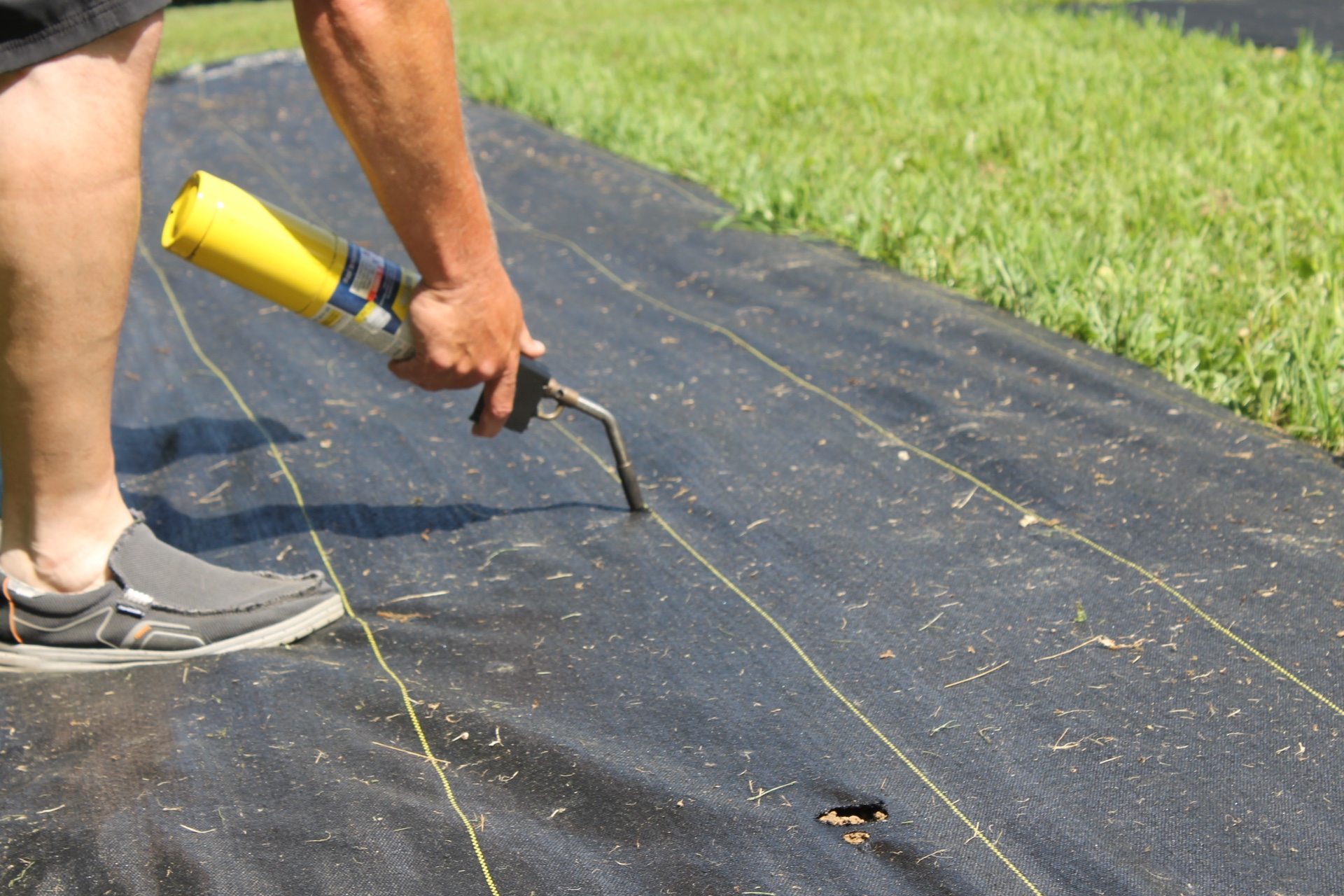
How We Chose and Tested the Best Landscape Fabrics
| Products tested | 4 |
| Time spent testing | 6 weeks |
| Tests performed | 4 |
| Price range | $30 to $125 |
Taylor Olberding shares his expertise with using weed barriers: “When it comes to durability, materials like heavy-duty woven fabric or thick plastic are great for withstanding moisture and regular wear and tear, ensuring prolonged protection for your garden beds.” In terms of sustainability, Olberding adds that “for a more environmentally friendly option, consider biodegradable fabric crafted from recycled paper mulch or cornstarch. Paper mulch can last around 12 months, and cornstarch tends to biodegrade between 4 and 8 months. Both can effectively control weeds without harming the environment.” With this professional advice in mind, we conducted extensive research on more than 30 different landscaping fabric products, which helped form the basis for selecting the best landscape fabrics. However, to properly assess each product, it was necessary to take into account the size, material, thickness, and overall quality. With those considerations, we narrowed our list down to six versatile and highly rated landscape fabrics and put four of them to the test.
To mimic installation in a typical garden or landscape setting, we tilled a 28-foot-wide garden area in our yard to remove weeds and grass and then installed all the landscape fabrics using the same set of landscape fabric pins. We assessed how easy each one was to cut, whether it frayed, and how well it stayed in place. A 65-inch gap was left between each section to compare weed growth against the bare soil. Over 6 weeks, weeds in the control areas reached nearly 12 inches tall, while none of the tested fabrics allowed a single weed to break through.
We also evaluated water permeability during 2 weeks of consistent rainfall and found that all tested fabrics allowed water to pass through. For planting, we used a propane torch to create clean holes in each material.
We rated each product on a scale from 1 to 5 based on installation, durability, effectiveness, and value. At the end of testing, we tallied the scores to determine our overall winner and then assigned categories based on the areas in which each landscape fabric excelled.
| Product | Installation | Durability | Effectiveness | Value | |
| DeWitt Pro-5 Weed Barrier | 5/5 | 5/5 | 5/5 | 4.7/5 | |
| Petgrow Heavy-Duty Weed Barrier Landscape Fabric | 5/5 | 4/5 | 5/5 | 4.5/5 | |
| Eco Gardener Premium Weed Barrier | 5/5 | 4/5 | 5/5 | 4.3/5 | |
| Flarmor Landscape Fabric Weed Barrier | 5/5 | 4/5 | 5/5 | 4.7/5 |
What to Consider When Choosing a Landscape Fabric
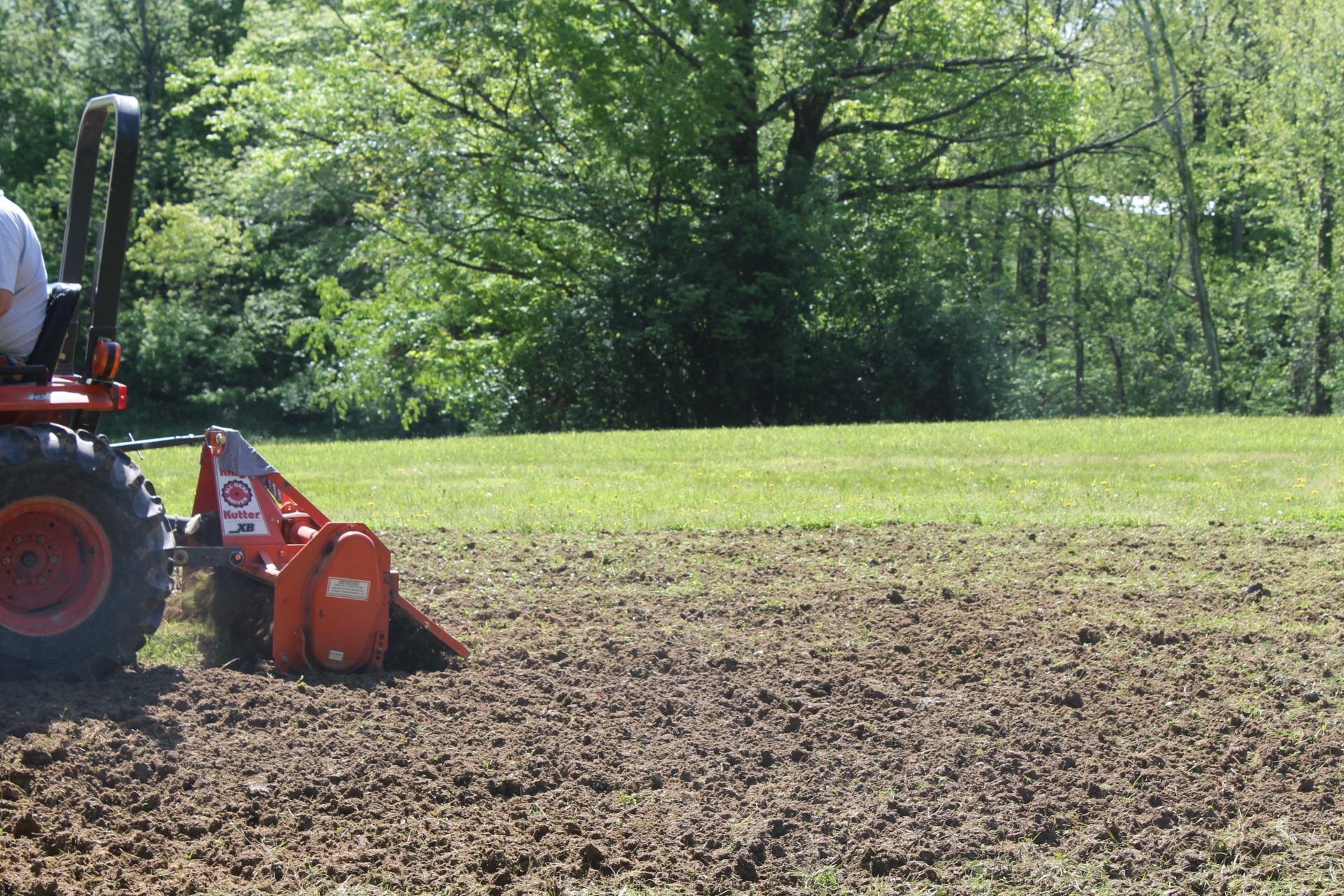
Though landscape fabric for weed control is a simple product, choosing the best one for your needs can be tough. Choices can vary based on the size of the job, foot traffic, whether it will be on the surface or under mulch or gravel, and the intended use of the area it’s protecting.
Woven, Nonwoven, and Perforated
Often made of polypropylene or linen, woven landscaping fabric is the most common weed barrier best suited for flower beds and areas around trees and shrubs. Small holes in this type of landscape fabric allow water, air, and nutrients to penetrate. For gravel gardens and pathways, consider the sturdier nonwoven option.
While it allows some water movement, nonwoven fabric isn’t as porous as its woven and perforated counterparts, so it’s not the best choice for landscaped beds. Highly permeable perforated landscape fabric is lightweight and ideal for areas with less foot traffic, specifically vegetable gardens and raised beds.
Thickness and Durability
Generally, the thicker the landscape fabric, the more it costs. Choose thicker barriers in gravel areas like pathways where rocks can wear away thinner fabrics over time. Areas prone to tough unwanted weeds also are worth covering with thicker fabric, since some—like thistle—can grow through weak barriers.
Avoid heavy weed barriers around vegetables, herbs, and annuals, because their roots can lie close to the surface and can be crushed beneath the weight. Choose thinner, perforated options for these applications.
UV Resistance
Exposure to the sun’s ultraviolet rays has damaging effects on many surfaces, including landscape fabric. For this reason, these barriers often require spreading a layer of mulch or gravel over the fabric to decrease exposure to UV light, thereby slowing the breakdown of the material.
Many barriers are labeled UV resistant or UV stabilized. “Resistant” implies that the fabric has innate qualities that make it less susceptible to damaging sunlight. Those labeled “UV stabilized” have been chemically coated to repel ultraviolet light. If chemicals are out of the question, like around edible plantings, choose the UV-resistant option.
Size of Roll for Project
Most weed barriers come in convenient rolls that are easy to transport and use. A weed barrier roll should display the fabric size, which buyers can use to calculate how much ground a roll can cover. Make sure to account for approximately 8 inches of overlap for areas that require several pieces of landscape fabric.
Weed barrier rolls are typically 3 to 6 feet wide and can range from 50 to upwards of 200 feet long. For large coverage areas, consider a wider roll to cover areas faster.
When comparing similar-size barriers, a thicker and heavier roll tends to mean thicker and longer-lasting fabric. As is the case with most home products, professional-grade products tend to be costlier, but they often offer added benefits such as more durable materials or better UV resistance.
Lifespan
In a perfect world, laying landscape fabric would be a once-and-done job. It’s not hard to do, but it is time consuming and difficult to repeat when aged landscape fabric needs to be replaced around an established landscape or landscape borders. Selecting the right weed barrier for the right application is key to getting the most bang for the buck.
Some weed barriers estimate the expected lifespan of the product. Longevity depends on several factors, including temperature, application, exposure, and moisture levels in the area where it’s installed.
Eco-Friendliness
The most common weed barriers available at stores or online are made from materials such as polypropylene and polyester, which are not particularly eco-friendly. Barriers made from natural fibers such as burlap or linen can be a more eco-friendly option, since they break down faster than plastics. More biodegradable landscape fabric options may consist of recycled paper mulch or cornstarch. Regardless of the material, choosing a durable option, using the barrier for as long as possible, and disposing of it correctly can reduce its ecological footprint.
For the most eco-friendly garden hack to reduce weeds, consider using natural barriers such as organic mulches, straw, peat moss, or other organic materials. Using natural barriers requires more work, but since these materials are biodegradable, they are the most environmentally conscious option.
Tips for Using Landscape Fabric
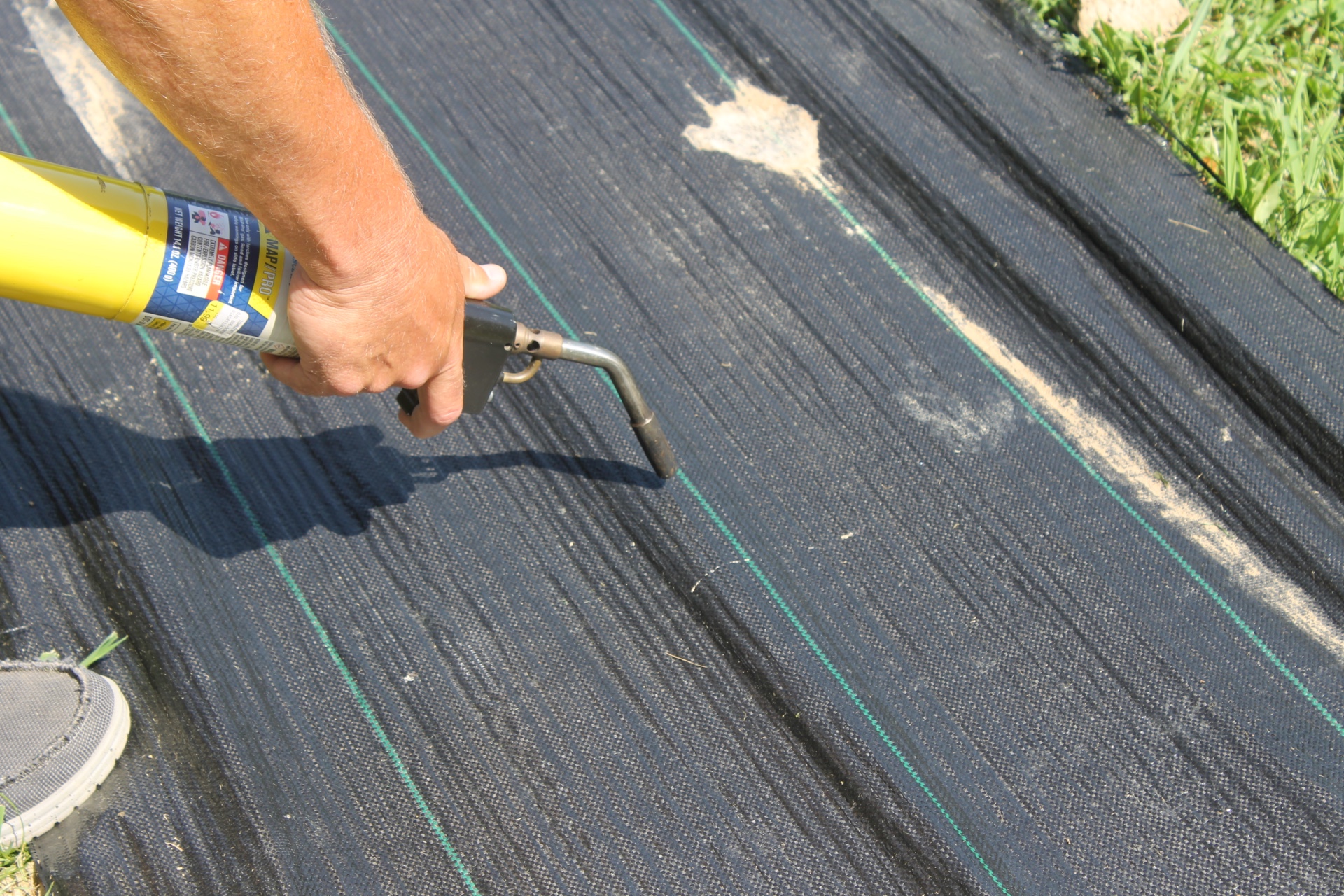
Installing a ground cover to prevent weeds is a relatively straightforward process. First, measure the area the weed barrier will cover to calculate the number of rolls required—and as with most home projects, it doesn’t hurt to buy a little extra. Make sure to choose a weed barrier that is suitable for the intended use; for example, opt for a thicker and impermeable barrier under pathways, as opposed to a thinner, permeable one for a garden bed. Once purchased, it’s key to prepare the ground for the weed barrier. To install the weed barrier, follow these steps:
- Pull weeds and clear the area of debris, grass, and other vegetation for the most effective coverage (aside from any plants being kept, of course!).
- If applicable, add any chosen soil amendments like compost manure or peat moss to nurture the soil under the barrier—it is less effective to add them after the weed barrier is placed.
- Level the soil with a rake, remove sharp objects, rocks, and roots, and lay down the weed barrier according to the manufacturer’s instructions.
- Use pegs or garden staples every few feet to pin the barrier in place for a sturdy hold, reliable protection, and a more seamless look. Sandbags or rocks are another option, as are other decorative landscaping elements.
- Optionally, spread a layer of mulch, rocks, or gravel over the barrier. This decorative layer can improve the garden’s appearance, reduce UV damage on the barrier, retain soil moisture, and further inhibit weed growth.
FAQs
Some types of landscape fabrics can be challenging to install, but these weed barriers help protect flower beds and prevent weed growth. Keep reading to find answers about how to install landscape fabric and other common questions regarding how this type of weed barrier works.
Landscape fabric is typically separated based on the type of material used to make the product. The types of landscape fabrics include woven, perforated, and nonwoven landscaping fabric.
Each type of landscape fabric has its own benefits depending on the application, so think about whether you’re looking to protect a flower bed, vegetable garden, or walkway when deciding on the best weed control solution.
Landscape fabric is designed to block out UV radiation as well as prevent weed seeds from growing, but this weed barrier fabric allows water and some air to pass through. This is possible due to the construction of the fabric.
Both lightweight and thick and durable fabric is either woven or has perforated holes to allow water to seep into the ground, though it should be noted that some fabrics can greatly reduce the flow of water, leading to standing puddles after big rainstorms.
Filter fabric is a similar product to landscape fabric, but it’s usually thinner and lacks the same UV resistance, leaving it susceptible to premature degradation. To protect flower beds, invest in thick, durable fabric that can block weeds and withstand sun and rain.
In most cases, landscape fabric is laid down and secured over the soil in a garden or around the base of a tree or bush in the yard. After the installation, you can apply organic mulches on top of the landscape fabric to protect the fabric from foot traffic and UV rays. Gravel or crushed rock also work well as the top layer.
The purpose of landscape fabric is to prevent weed growth. This is achieved by pulling weeds, using salt to kill weeds, or employing another weed removal method in the garden and then installing landscaping fabric directly over the soil. Some users also put sand or gravel underneath the landscaping fabric to help level the ground, though this isn’t necessary. This is especially true since mulch, gravel, and crushed stone are often spread over the top of the fabric
Yes, professional landscapers often use landscape fabric under mulch or rocks in garden beds. They may also use it in sloped areas to prevent soil erosion.
Meet the Tester
Katie Barton is a writer and product tester with years of greenhouse and gardening experience, giving her real-world insight into what makes quality landscape fabric.
Additional research provided by Heather Blackmore and Timothy Dale.


